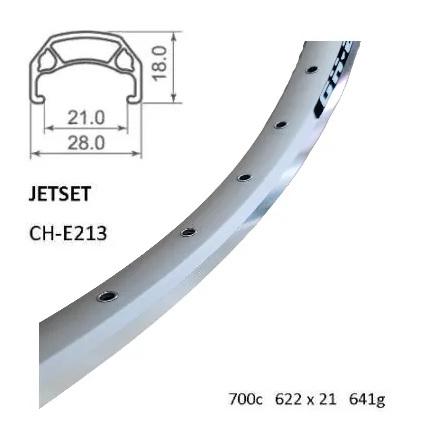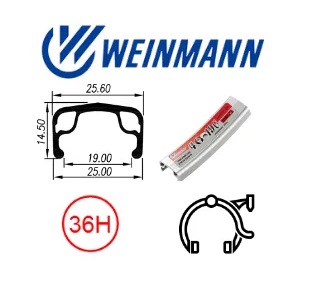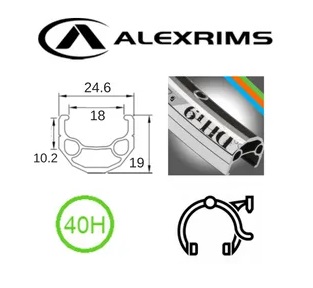Description
Confused about what all the short hand means on our rim codes?
Here’s how to interpret them:
RIM REFERENCES
D/W or S/W
This means ‘double wall’ or ‘single wall’ and you will see this commonly on a wheel or rim that is compatible with rim brakes. This refers to the internal profile of the rim, where single wall is considered weaker than a double wall rim. A double wall creates additional stiffness and strength in the rim against things like brake force. A double wall rim also has increased strength against the pressure from the tyre bead pushing out form the inside of the rim. You will find a double wall rim is generally of higher quality than a single wall.
Eyeletted or Non Eyeletted
This is referring to where the nipples of the spokes are in the rim of the wheel. There are often eyelets (usually silver) that surround the spoke hole in the rim. You will generally find an eyeletted rim is stronger as these eyelets reinforce the area of high fatigue from the spoke nipples.
MSW or Non MSW
This refers to a machined side wall or a non machined sidewall. This is used to describe a wheel rim that is compatible with rim brakes, and refers to the braking surface area. You will be able to see a machined sidewall on a rim, it is the flat portion where the brake gains purchase on the rim. A machined sidewall provides a better gripping surface for your brakes, giving you increased braking power.
A/V, S/V or F/V
These acronyms refer to the type of valve hole machined into the rim. An A/V is an ‘auto valve’ so this is what you would find on a car tyre. This type of valve is more commonly known as a Schrader Valve type. An F/V is a French valve or a Presta type valve. This is a longer thinner type of valve that you would find on road bikes or gravel bike wheels.
P/J or S/J
These refers to Pin Joint & Sleeve Joint respectively, and they are describing the method of connecting the two ends of the rim profile. Pin Joint rims have small pins within the profile of the rim which ensure a stiff connection between the ends. Depending on how ‘tough’ the rim has been designed, there may be 2 or 4 pins within the profile.
Sleeve Joint rims on the other hand have an overlapping connection within the rim profile which provides added stiffness. This strength is a result of the greater surface area of each side of the profile touching.
28H, 32H, 36H etc
These numbers followed by an H refer to the spoke ‘Hole’ count of the rim. This means that a 36H rim requires a corresponding 36 spokes, and a hub whose spoke spoke count is also 36. You will often find rear wheels with a higher spoke count than the front wheel, and more aerodynamic wheels will have less spokes. A higher spoke count is often preferred for a stronger wheel such as in an ebike, a cargo bike or a downhill bike. And 32H is probably the most common type in modern wheels.
What does ‘In Stock at Warehouse’ mean?
This means the product is in stock in our warehouse, and will be ready to ship usually within 2-4 business days from order.
What is a ‘Bulk Item’ ?
A bulk item is a product that is large & bulky and therefore does not fall under our ‘Free Shipping’ category.
Can I pick up from the Warehouse?
The warehouse is not open to the public. For click & collect orders we bring your order over from the warehouse for you to collect from us at 27 Swan Street, Richmond. As the warehouse is huge, we aren’t able to keep all this stock in our shop in Richmond.
How much does it cost to ship this item to me?
We have a shipping calculator in our Cart. Adding the item to the cart & entering your postcode will allow the Cart to calculate how much it costs to ship the item to your address. And it will give you options for standard or Express post.




